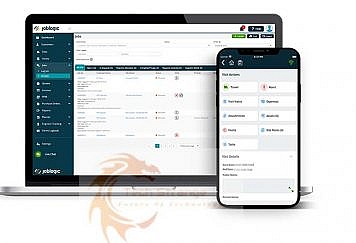Playgrounds give kids a place to just be kids. When they’re at the playground, kids get to exercise and blow off steam, and they also work on developing their social and problem-solving skills. Playgrounds are present in many different spaces, from schools to public parks to residential backyards.
However, there are many key differences between commercial and residential playground equipment. It’s important to understand these differences when investing in new playground equipment for your business or property. Here are the key differences between commercial and residential playground equipment to keep in mind.
1. Usage
Residential and commercial playground equipment serve very different purposes. Residential playground equipment is designed for home use in backyards. Commercial playground equipment is designed for use in public spaces. Commercial equipment is a must for schools, parks, or any other public spaces where kids play.
Most residential playground equipment is designed to be used by just one or two kids at a time. This type of equipment allows kids to play comfortably at home, without having to make a trip to the park. Alternatively, commercial playground equipment is designed for much larger groups of children. Commercial equipment supports more social, interactive play and provides more stimulation for kids.
2. Size
Commercial and residential playground equipment differ widely in terms of size and scope. Residential playground equipment needs to fit safely in a backyard, so it often has a very small footprint. Residential equipment also tends to be lightweight, so it can be folded up and stored in a garage when not in use.
Since commercial playground equipment is designed for schools and parks, it tends to be much larger. Commercial playground equipment is also much heavier and is designed for permanent installation. Unlike residential equipment, commercial playgrounds are not portable and can typically only be moved with professional help.
3. Safety Standards
Both residential and commercial equipment are designed with safety in mind. However, they have very different safety standards that they need to meet. Residential equipment is tested for safety, but typically only needs to support one or two kids at a time. This means that it isn’t always safe to use with large groups. Kids may also outgrow the weight limit for residential play equipment as they get older.
Commercial playground equipment needs to meet robust federal safety standards before hitting the market. These standards are put in place by the Consumer Product Safety Commission and ASTM International. Failure to adhere to these standards could result in fines or the closure of your playground. Commercial safety standards are highly specific. For example, there must be six feet of protective surfacing surrounding the playground in each direction. Additionally, structures taller than 30 inches need to be spaced at least nine feet apart.
4. Durability
Durability is another key difference between these two types of play equipment. Residential play equipment is typically made with less durable materials than commercial play equipment. This is because residential equipment is typically only used by one family at a time, so it doesn’t see much wear and tear.
Alternatively, commercial playgrounds are used by dozens or even hundreds of children each day. This means they need to be durable enough to support near-constant play without breaking. As a result, high-quality commercial playground equipment is designed to last for generations. In some cases, playground equipment even becomes an important community landmark.
5. Customization Options
When purchasing residential playground equipment, there usually aren’t many customization options available. The equipment has a fun but simple design that helps keep children entertained at home. However, there aren’t many ways to personalize this equipment. If you’re lucky, you might be able to choose between a few colors.
Alternatively, commercial playground equipment is highly customizable. Some manufacturers even offer fully custom designs. This means you can purchase playground equipment with specific colors and themes to suit your preferences. The equipment can also be configured to suit a wide range of ages and developmental stages. For example, one playground could include features for both toddlers and elementary schoolers. This makes the playground more accessible to a wider range of families, and it helps keep children of all ages stimulated and engaged.
6. Cost
Residential playground equipment is built with affordability in mind. This means that manufacturers don’t use the highest quality materials, but instead opt for a balance of value and cost. This means that the average American family can enjoy a play space in their backyard.
Commercial playground equipment is typically purchased by schools or public park districts. It comes with a higher price tag to match the higher quality of the materials and the sophisticated design elements. Commercial playground equipment also requires professional installation, which comes with an additional cost. However, investing in commercial playground equipment can pay off for generations and benefit the entire community.
Final Thoughts
Both commercial and residential playground equipment serve an important purpose in kids’ lives. However, it’s very important that each type of equipment is used in the right setting. Residential playground equipment is not durable enough to meet the demands of a public park, school, or other open play space. While commercial play equipment may be more expensive, it’s necessary to keep kids safe.
Follow TechStrange for more!





